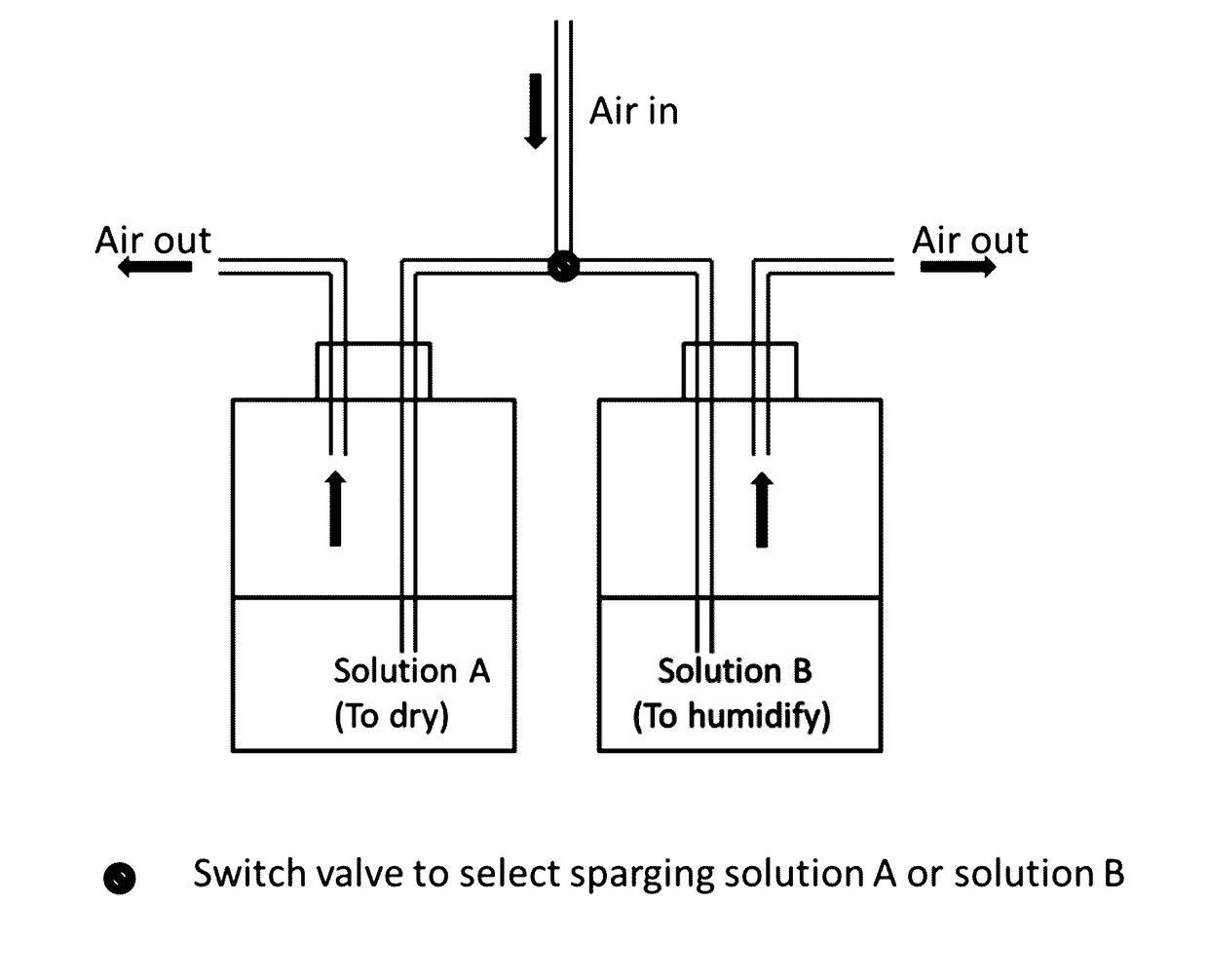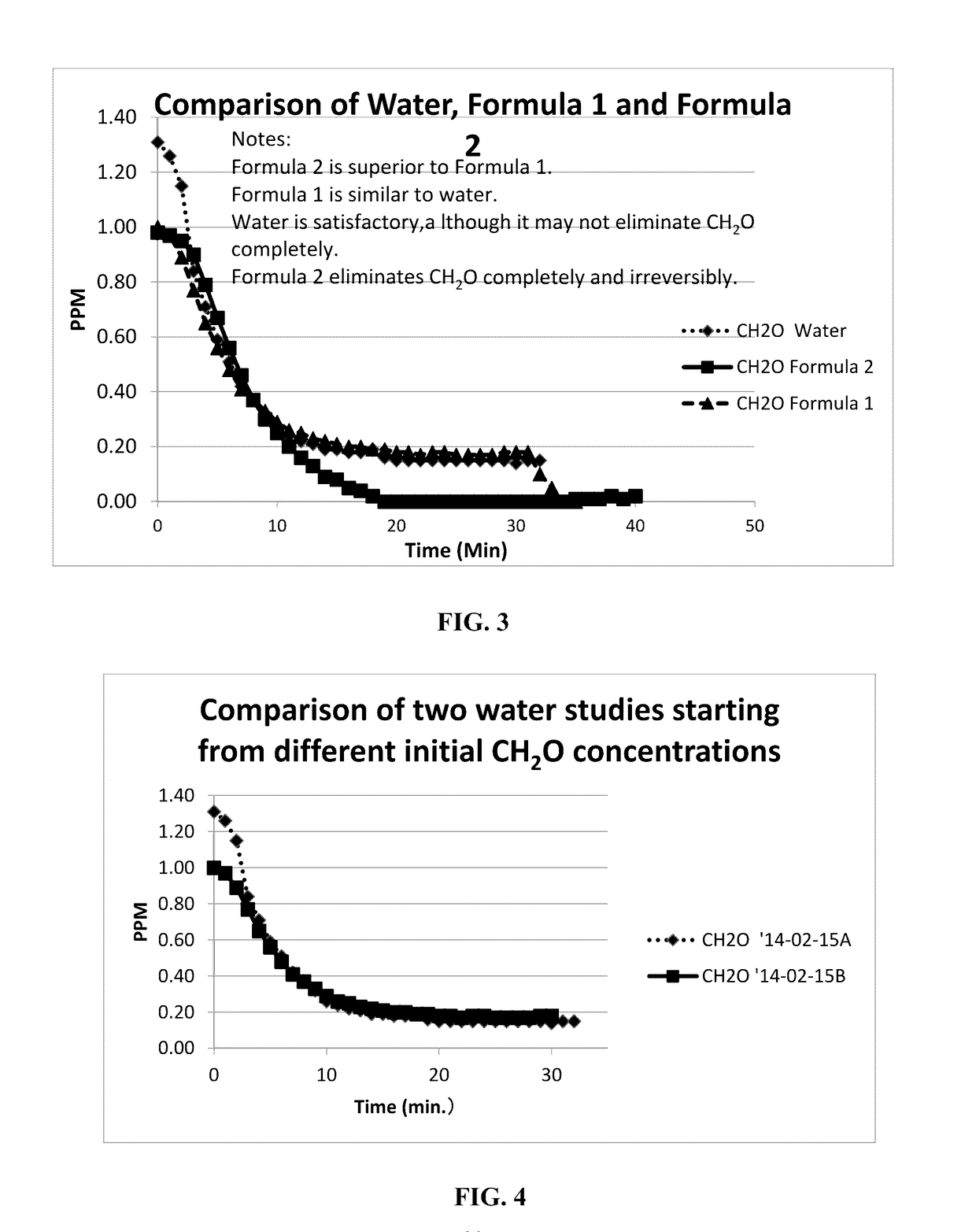Method and Apparatus for Purification and Treatment of Air
a technology of air purification and air, applied in the field of methods and, can solve the problems of increasing the humidity level of the environmental space, requiring frequent replenishment or replacement of the water in the vessel, and raising the humidity level of the remove, so as to improve the temperature and humidity of the environmental space air, and reduce the level of one or more contaminants
- Summary
- Abstract
- Description
- Claims
- Application Information
AI Technical Summary
Benefits of technology
Problems solved by technology
Method used
Image
Examples
experimental examples
Example 1. Determining the Limits of the Water as Absorbing Media in Removal of Formaldehyde
[0290]Using System (1 or 2), the limit of the effectiveness in removing formaldehyde by sparging the air in water alone was studied. In two separate runs, starting from an initial concentration of 1.0 ppm formaldehyde, the concentration dropped over a period of 10-12 min reaching a steady concentration of about 0.20 ppm. From this data, it appears that the water / formaldehyde mixture in the absorbent reaches an equilibrium point and that no further formaldehyde can be removed beyond this point. The results are plotted in FIGS. 1 and 2.
Example 2. Comparison of Water, Formula 1 [Aqueous Solution of 2% (w / w) Monosodium Glutamate (MSG), 1% (w / w) NaHCO3, 50% (v / v) Glycerin]; and Formula 2 [1% Aqueous Solution of Glycine (w / v)] in the Removal of Formaldehyde
[0291]Using System (1 or 2), the relative effectiveness of water, formula 1 and formula 2 as absorbent media to remove formaldehyde was studied ...
example 3
ng the Effect of Initial Concentration on Water Effectiveness as an Absorbing Media
[0292]Using System (1 or 2), the effect of the initial concentration of formaldehyde on the effectiveness of sparging the air into water alone was studied. Starting from an initial concentration of 1.0 ppm and 1.30 ppm formaldehyde, the concentration dropped over a period of 10-12 min reaching a steady concentration of about 0.20 ppm. From this data, it appears that the water / formaldehyde mixture in the absorbent media reaches an equilibrium point regardless of the initial concentration and that no further formaldehyde is be removed beyond this point. The results are plotted in FIG. 4.
example 4
ng the Effect of Air Flow Rate on the Time Required to Remove Formaldehyde
[0293]In a comparison study using System (1 or 2) the rate of drop in formaldehyde concentration was measured at two different airflow rates of sparging into water. Starting from a concentration of 1.00 ppm, the concentration of formaldehyde decreased to 0.20 after about 10 min when the flow rate was maximum. The concentration diminished and held steady at 0.16 ppm from 15-20 min. Starting from a concentration of 1.00, the concentration decreased more gradually to about 0.70 ppm after 10 min when the flow rate was at a minimum. The results are shown in FIG. 5.
Humidity Control Experiments
PUM
| Property | Measurement | Unit |
|---|---|---|
| Temperature | aaaaa | aaaaa |
| Temperature | aaaaa | aaaaa |
| Fraction | aaaaa | aaaaa |
Abstract
Description
Claims
Application Information
 Login to View More
Login to View More - R&D
- Intellectual Property
- Life Sciences
- Materials
- Tech Scout
- Unparalleled Data Quality
- Higher Quality Content
- 60% Fewer Hallucinations
Browse by: Latest US Patents, China's latest patents, Technical Efficacy Thesaurus, Application Domain, Technology Topic, Popular Technical Reports.
© 2025 PatSnap. All rights reserved.Legal|Privacy policy|Modern Slavery Act Transparency Statement|Sitemap|About US| Contact US: help@patsnap.com



